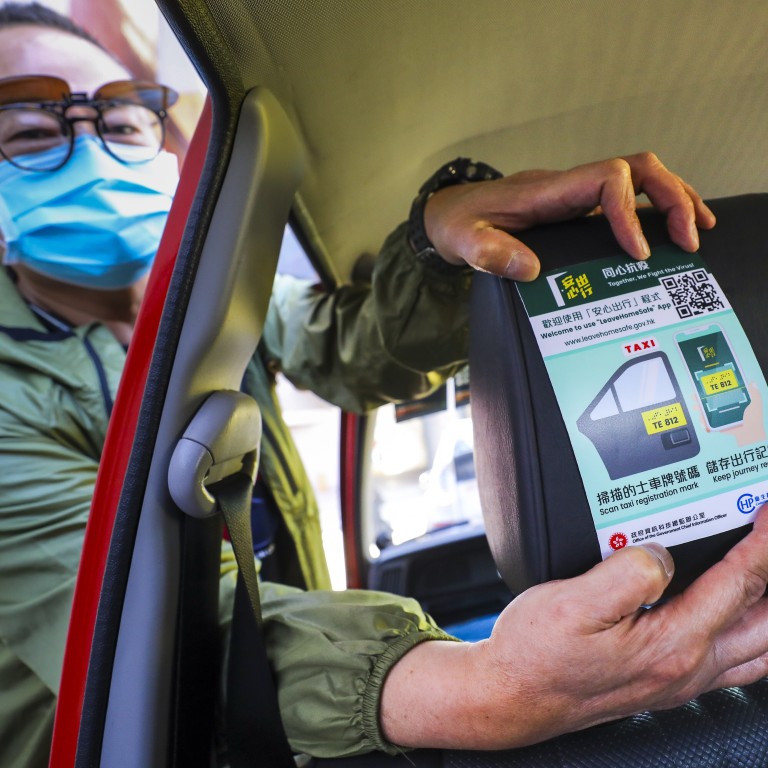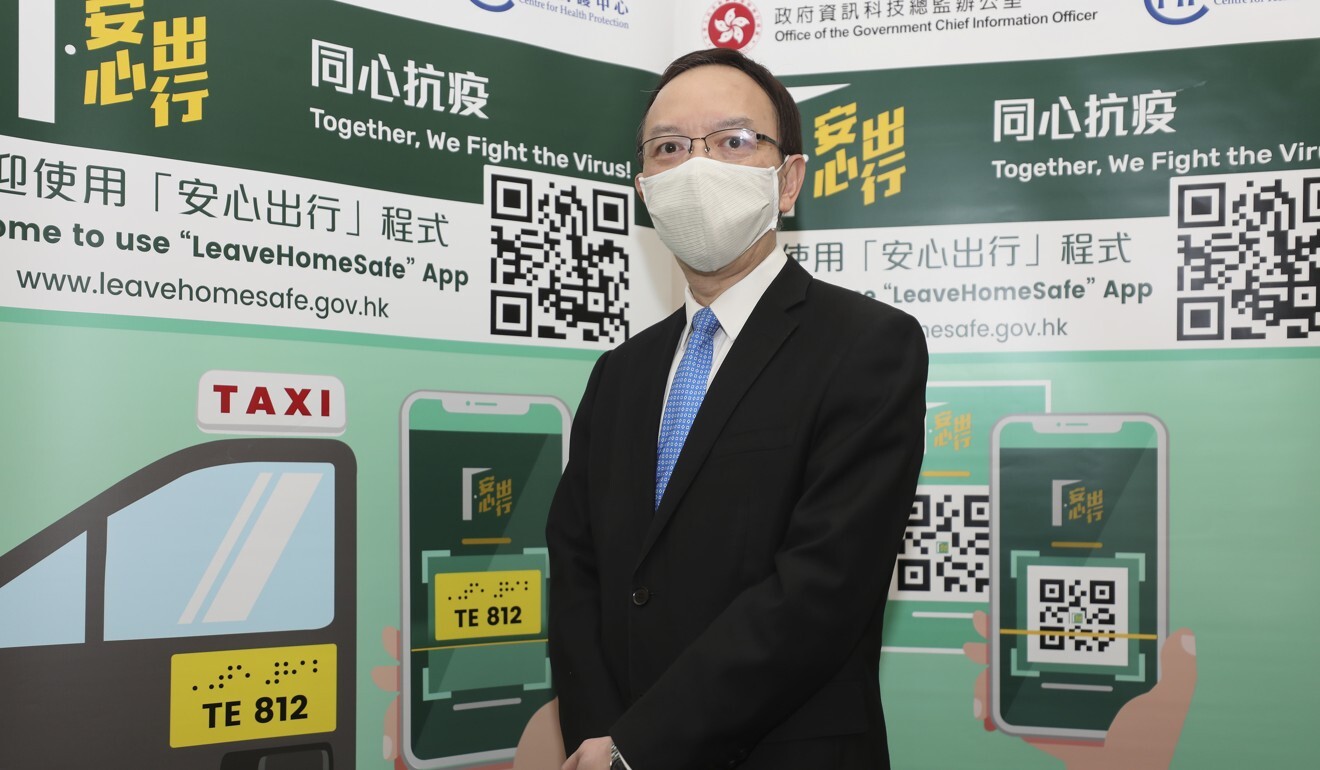
Hong Kong Covid-19 app may get more user-friendly features, official says, allaying concerns over residents’ privacy
- Government Chief Information Officer Victor Lam says initial design of ‘Leave Home Safe’ app was somewhat ‘overdone’ and it is being redeveloped
- Access to photo albums, USB storage on users’ smartphones and Wi-fi connections has been blocked to allay users’ privacy concerns
More user-friendly features could be added to Hong Kong’s Covid-19 risk exposure app from next week, a senior information technology official has said, admitting that the initial design of a function for residents to record their journey was “overdone”.
Government Chief Information Officer Victor Lam Wai-kiu said the “Leave Home Safe” app – with more than 300,000 downloads and spanning over 45,000 public and private venues across the city – had been renewed this week to allay privacy concerns. Its access rights to photo albums and USB storage on smartphones and to users’ Wi-fi connections have been blocked.
Currently, when users enter a venue, they have to scan the specific QR code displayed there and press “leave” on the app when they exit.
But some people found it troublesome as they felt users might not remember to click “leave” when they departed a place or they could visit multiple stores in a shopping centre, which would mean they would have to press “leave” whenever they exited an outlet.
Residents may need to scan QR code into Covid-19 app to enter certain premises
To make the experience better, Lam said, officers were planning to make it simpler for users to mark the exit time when visiting a venue, while also allowing people to review their previous journey records. He hoped to roll out some of the new functions next week.
“As many people suggested setting up a function to automatically help users mark they had left a place, we are working on this. That means when they haven’t pressed ‘leave’ after a few hours, we will help them to do so,” he said.
Lam added authorities were also considering a function to automatically mark “leave” for users when they left one venue and entered another with a new scan.

Lam explained his team had previously thought of helping users to mark that they had left a place automatically after a period of time. But they chose not to go ahead with the idea because they felt it could cause some inaccuracies in tracking records.
But later they realised the problem could be solved when officers at the Centre for Health Protection double-checked with patients about their routines, he said.
“Putting it in a way that doesn’t sound so nice, we have overdone something,” Lam said, adding he also forgot to press the leave button after he got out of a taxi.
One-third of 90 newly confirmed Covid-19 cases have no known source
The official said his team was considering connecting the app with data on users’ stored value payment card – Octopus – so people would not have to scan the QR code after tapping their cards there, but that function would need smartphone holders’ consent due to privacy concerns.
Another feature in the works was to create a hotspot analysis on a map with technology to identify high-risk places for users, he said, adding that a study on its feasibility had started.
Lam said Hongkongers might be able to use the analysis function early next year.
Francis Fong Po-kiu, honorary president of the Hong Kong Information Technology Federation, welcomed the plan to make it easier to record users’ exit time, noting the current app was quite troublesome at times.
But he said some residents would have privacy concerns over the proposal to link the app with their Octopus cards, and urged officials to think about its implementation carefully and not to make it mandatory.
Fong also said creating a map to identify high-risk places for residents could spark a labelling effect.
“It’s like labelling Amoy Gardens. During Sars, no one dared to go there,” he said, referring to the housing estate where many residents were struck by the severe acute respiratory syndrome in 2003.

